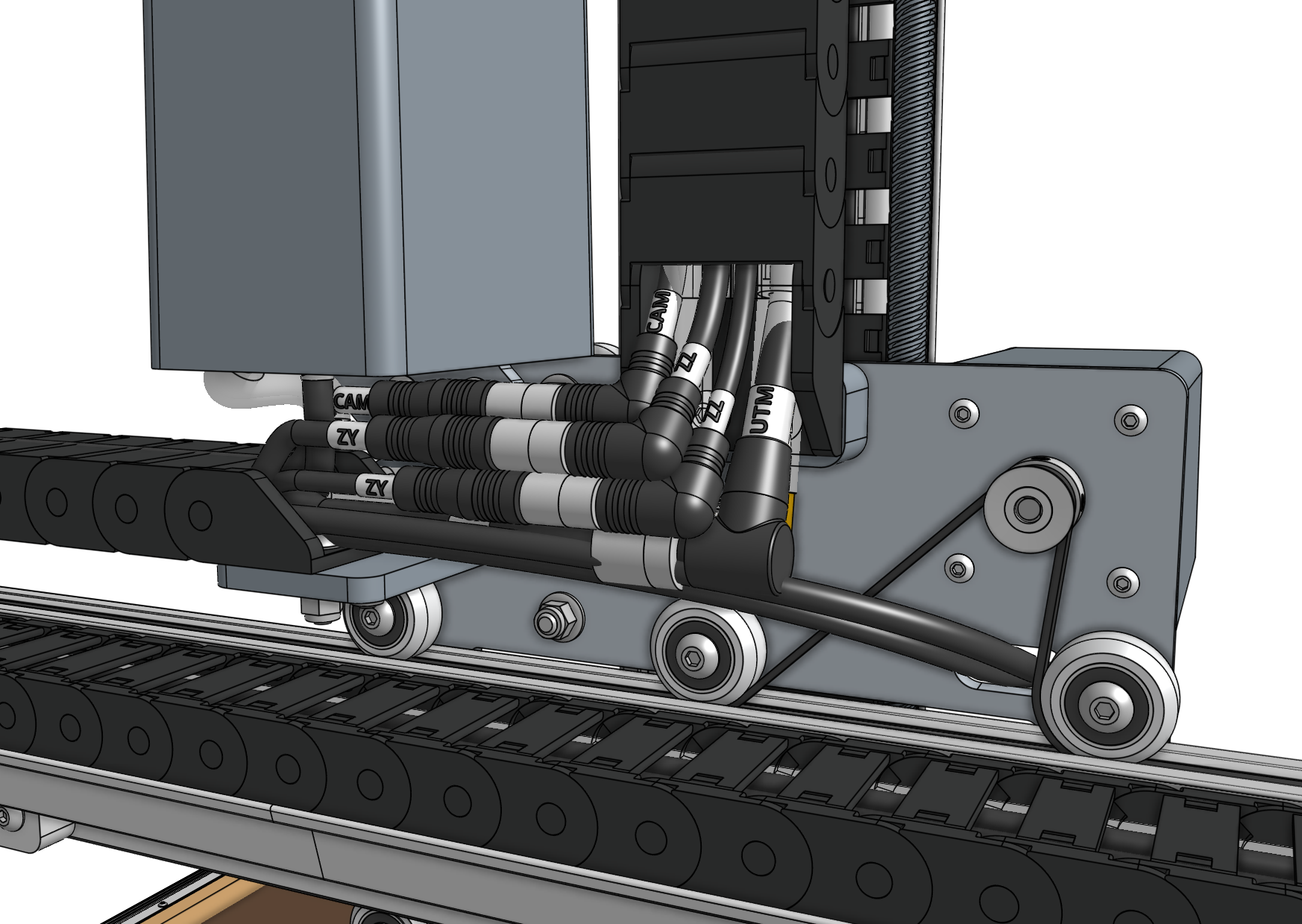Cross-Slide and Z-Axis
Documentation and assembly instructions for the FarmBot Genesis cross-slide and Z-axis
- Step 1: Add the cable carrier mount
- Step 2: Mount the vacuum pump
- Step 3: Slide the cross-slide onto the gantry main beam
- Step 4: Feed and secure the belt
- Step 5: Attach the cable carrier
- Step 6: Connect the water tubing
- Step 7: Connect the cabling
- Step 8: Connect the y-axis motor and encoder
- Step 9: Remove slack
- What’s next?
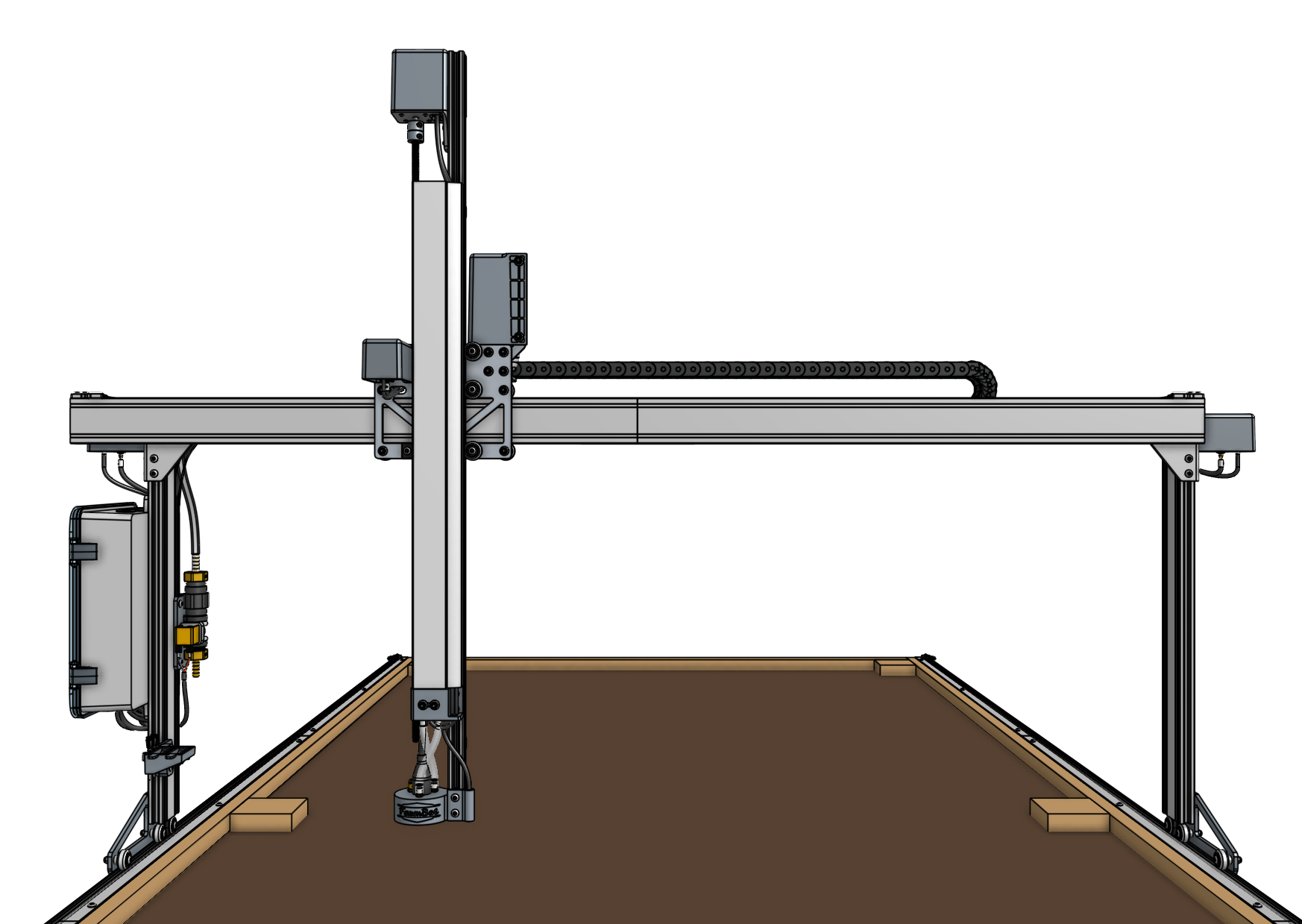
30 minutes
This is the estimated time it will take to assemble the cross-slide and Z-axis onto the gantry.
Step 1: Add the cable carrier mount
Attach the 60mm cable carrier mount to the cross-slide plate using two M5 x 16mm screws and M5 flange locknuts.
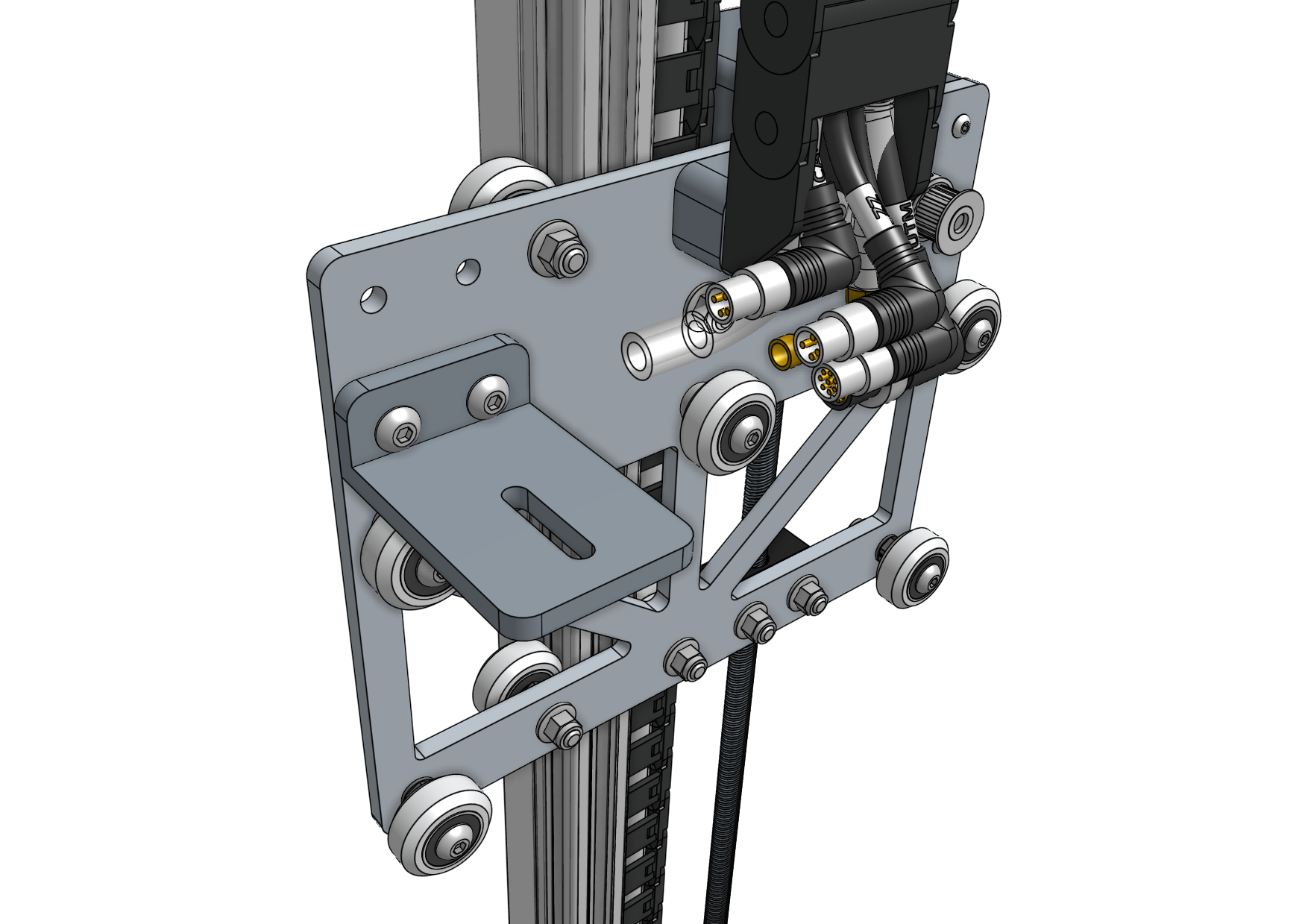
Step 2: Mount the vacuum pump
Attach the pre-assembled vacuum pump subassembly to the cross-slide plate using two M5 x 16mm screws and M5 flange locknuts.

Then connect the inline air filter and vacuum tube between the pump and the tube coming from the Z-axis cable carrier.
Ensure you connect the tubing to the inlet port of the vacuum pump, as denoted by the arrow pointing up.
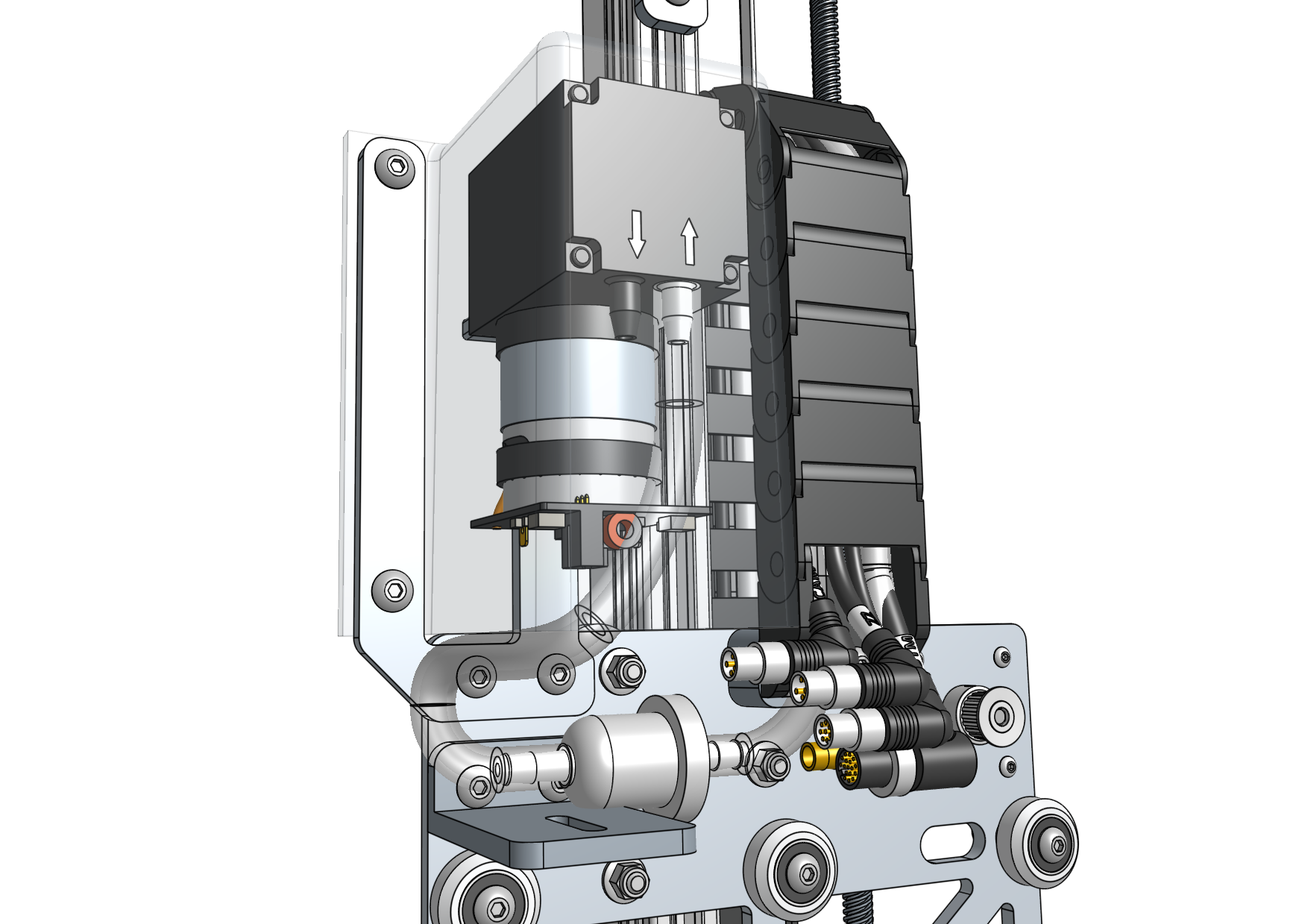
Step 3: Slide the cross-slide onto the gantry main beam
In order for the cross-slide to slide smoothly and wobble-free on the gantry main beam, you must adjust the eccentric spacers of the bottom two V-wheels. Adjust the eccentric spacers using the eccentric spacer adjustment reference guide.
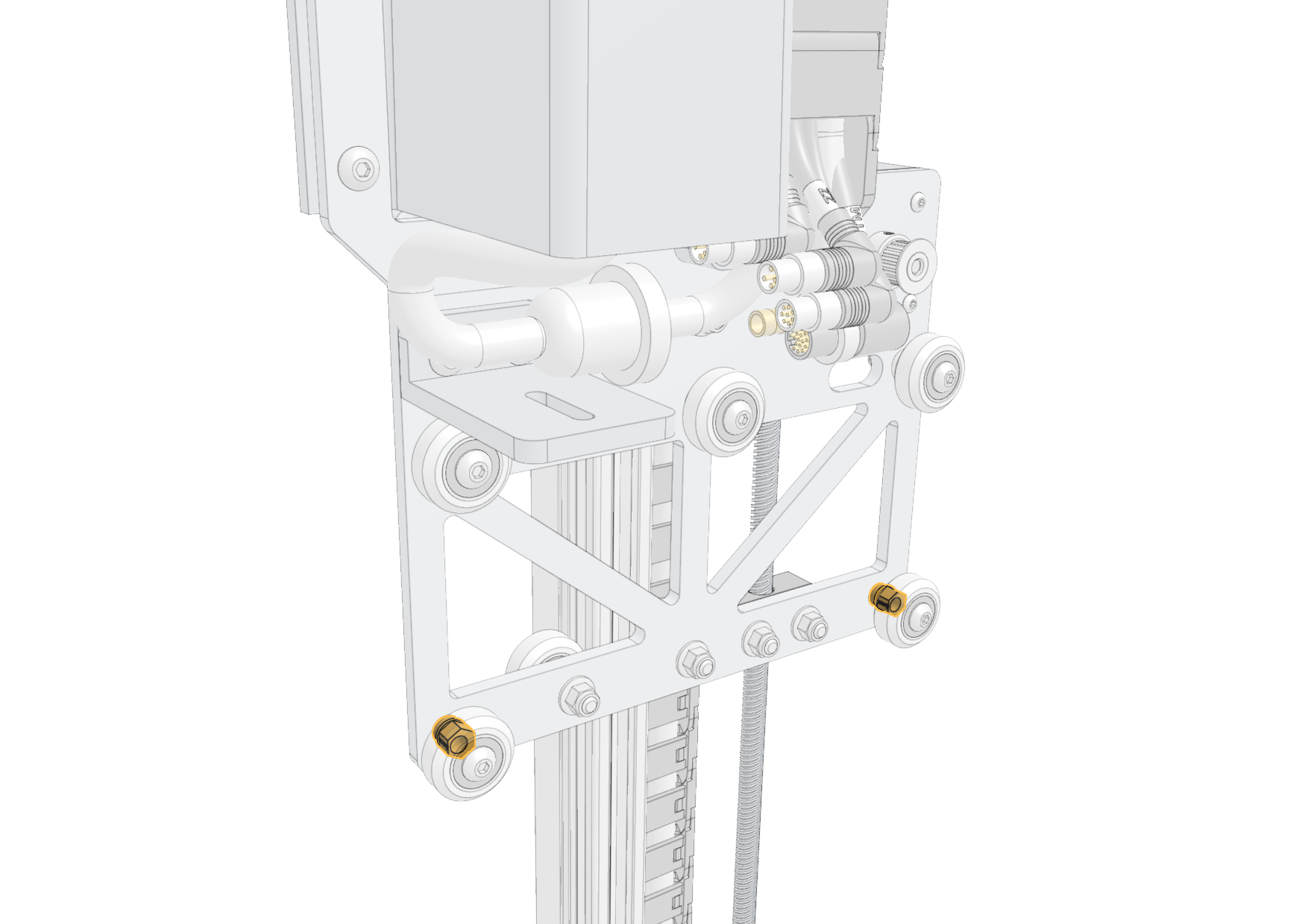
Then slide the cross-slide onto the gantry main beam from the side opposite the electronics box.
You may need to manually rotate the leadscrew to raise the Z-axis so it clears the gantry wheel plate.
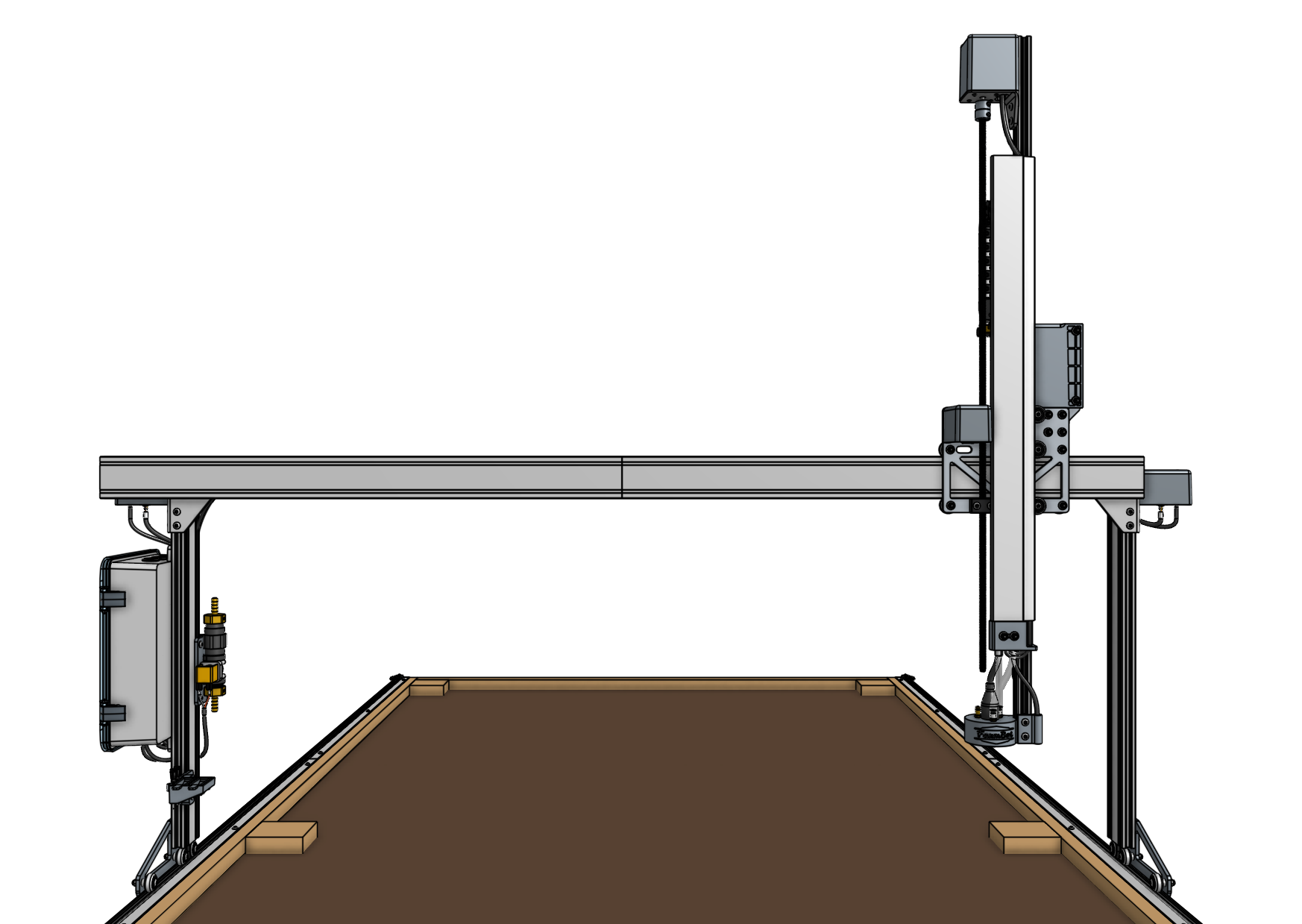
The cross-slide should move easily across the full width of the gantry. If you feel any significant resistance, re-adjust the eccentric spacers so that there is less resistance to movement.
Pay special attention to the joint(s) between the gantry main beam extrusions. If there is any significant bump or resistance to movement at a joint, use 150 grit sand paper to sand away the bump.
Step 4: Feed and secure the belt
Secure one end of the short belt to a belt clip using a belt sleeve and then attach the clip to the end of the gantry main beam using two M5 x 10mm screws and a 20mm nut bar. The tab of the belt clip should be oriented towards the front of the FarmBot. Refer to the belt installation guide for reference.
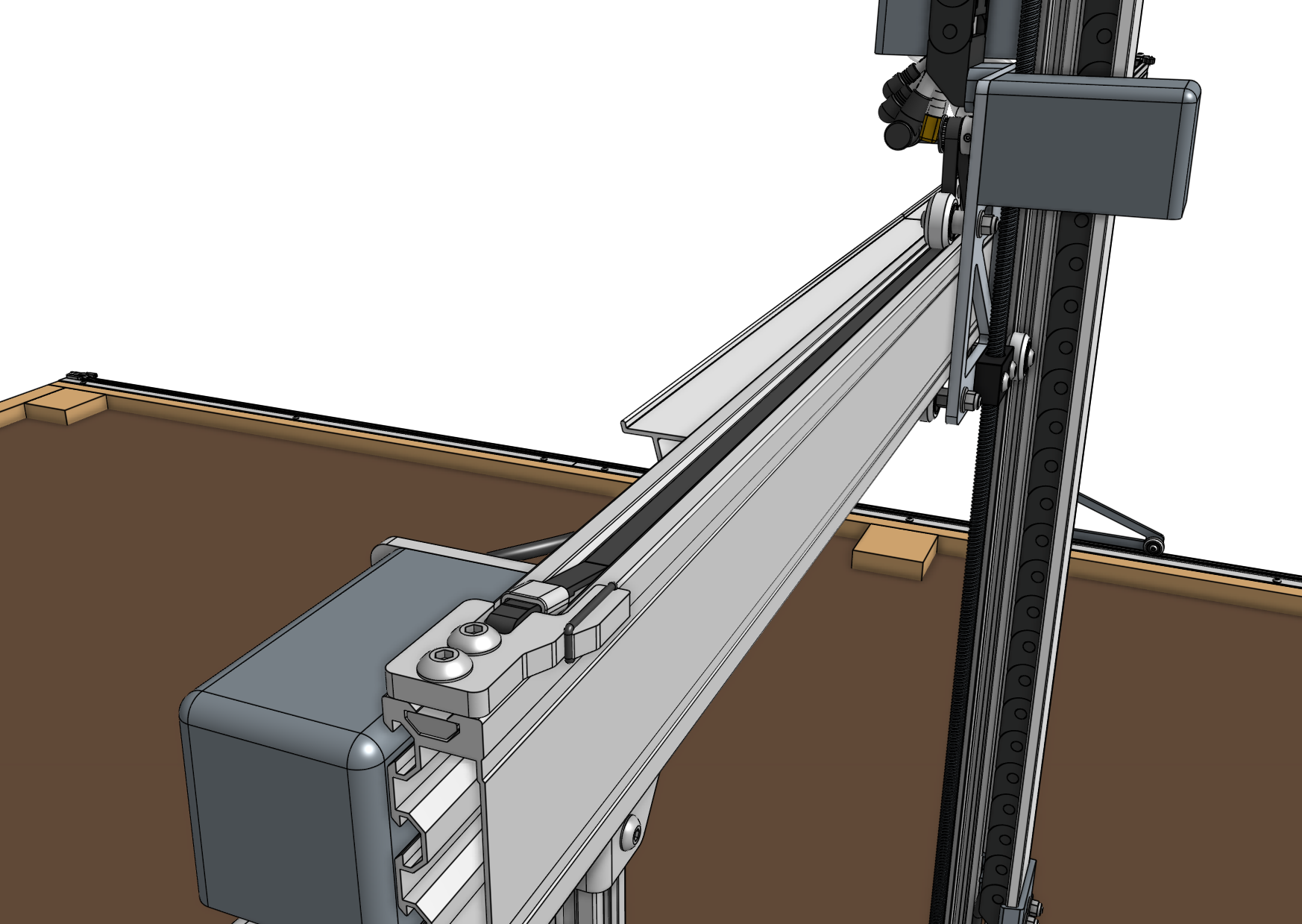
Feed the belt under the first V-wheel of the cross-slide, then over the pulley and under the remaining two V-wheels. The flat side of the belt should be in contact with the V-wheels while the toothed side should engage with the teeth on the pulley.
Make sure that the belt is not twisted anywhere.

Secure the belt at the other end of the gantry with another belt clip, 20mm nut bar, and two M5 x 10mm screws. Ensure there is a small amount of tension on the belt once everything is in place.

Step 5: Attach the cable carrier
Lay the y-axis cable carrier onto the extruded 40mm horizontal cable carrier supports on the gantry main beam such that the end with the 90-degree connectors will connect to the cross-slide. Attach the cable carrier to the 60mm cable carrier mount using two M5 x 16mm screws and M5 flange locknuts. The screws should thread firmly through the cable carrier end piece.
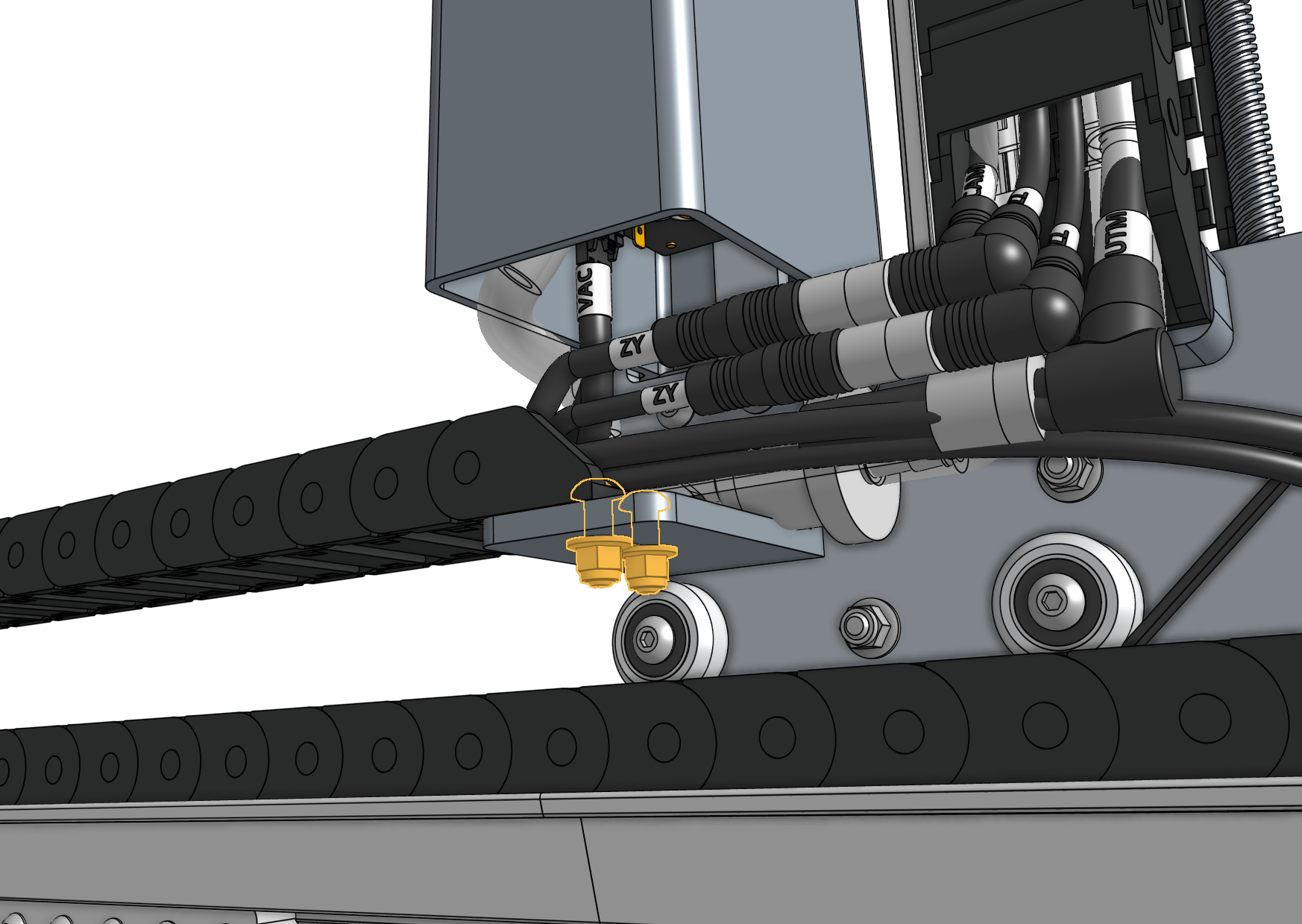
Step 6: Connect the water tubing
Push the y-axis water tube onto the 90-degree barb and the NPT to barb adapter on top of the solenoid valve.
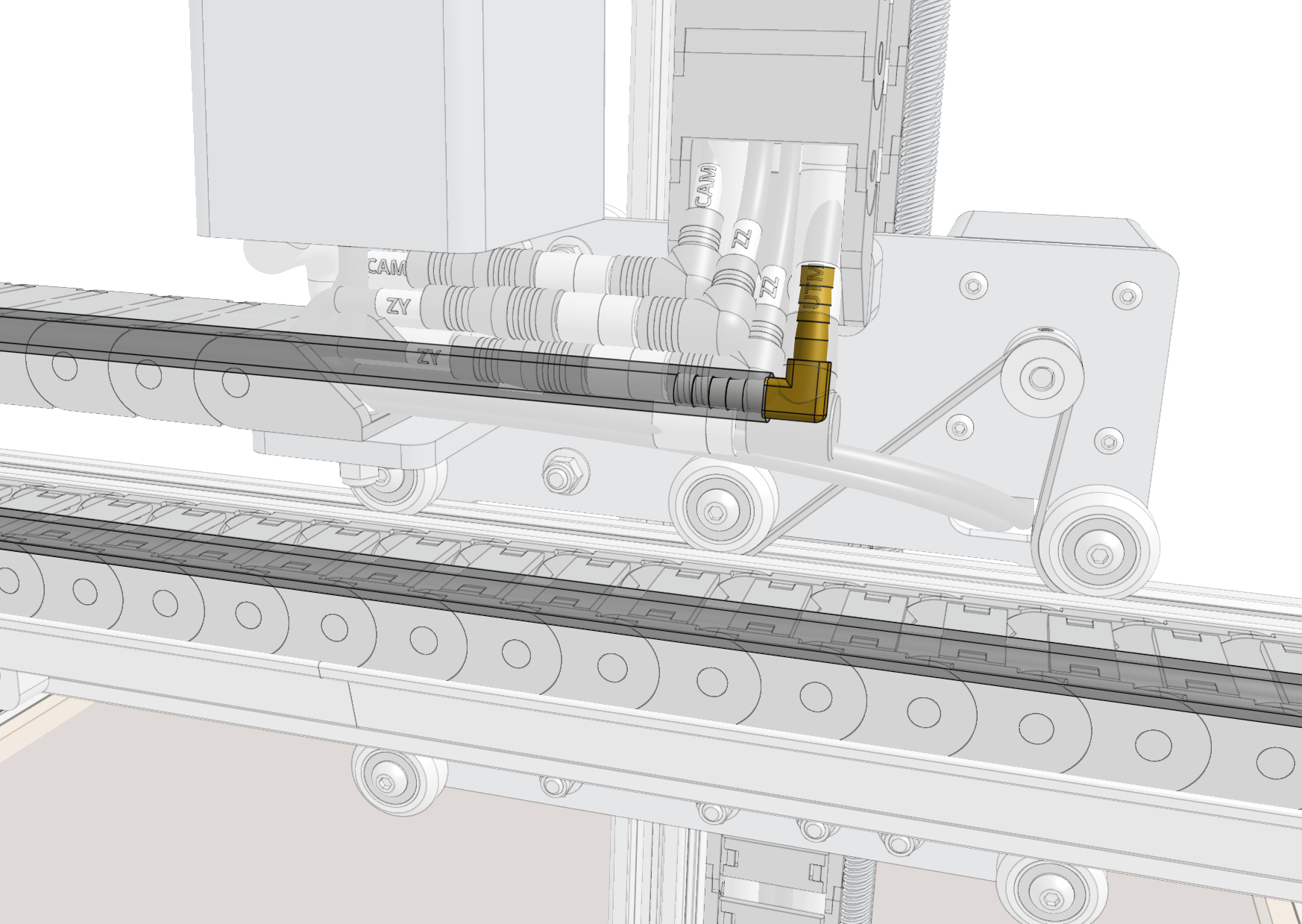


Step 7: Connect the cabling
Connect the Y vacuum pump cable (VAC) to the vacuum pump.
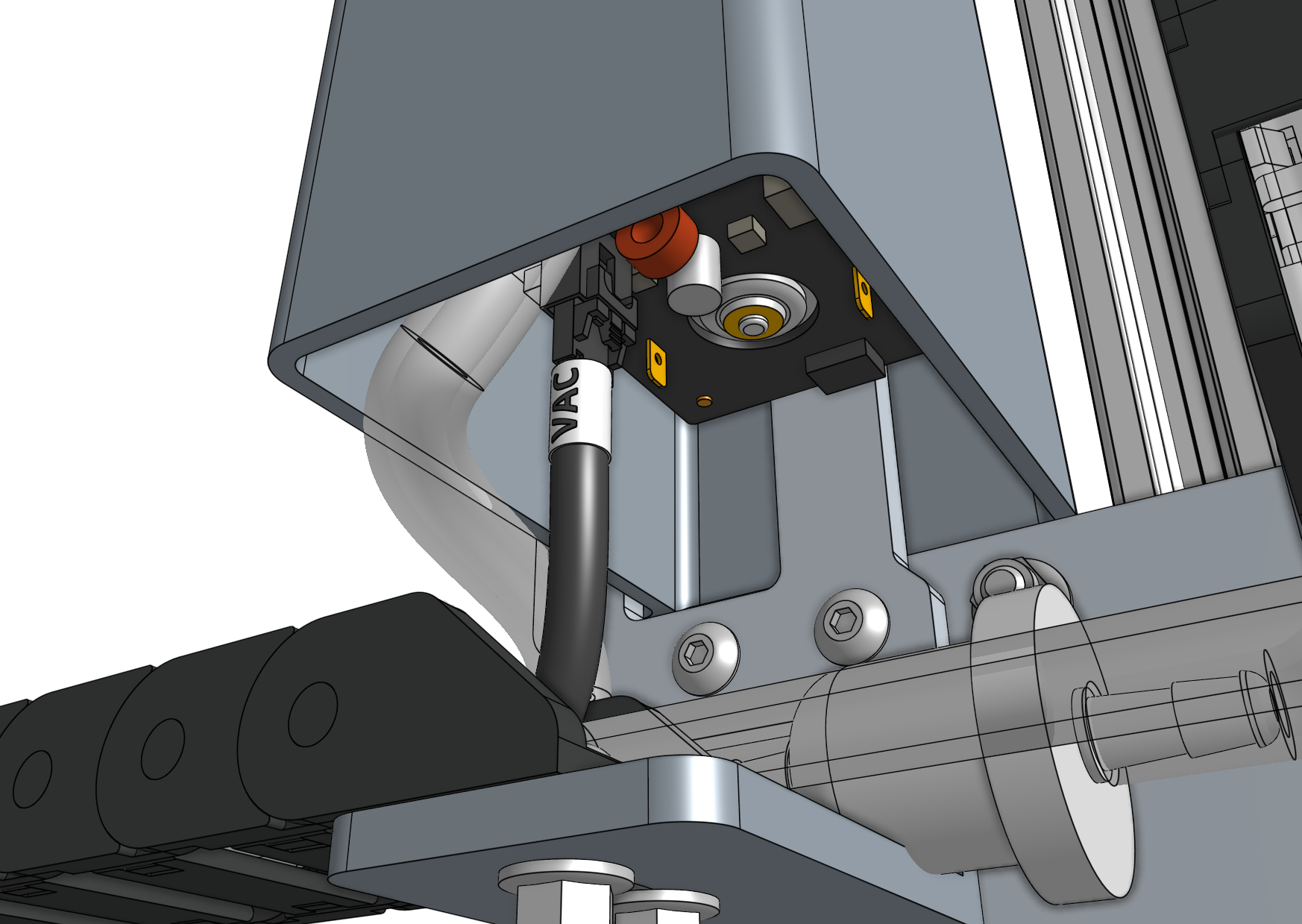
Connect the Y UTM cable and Z UTM cable (UTM) together with the 12-pin connectors.
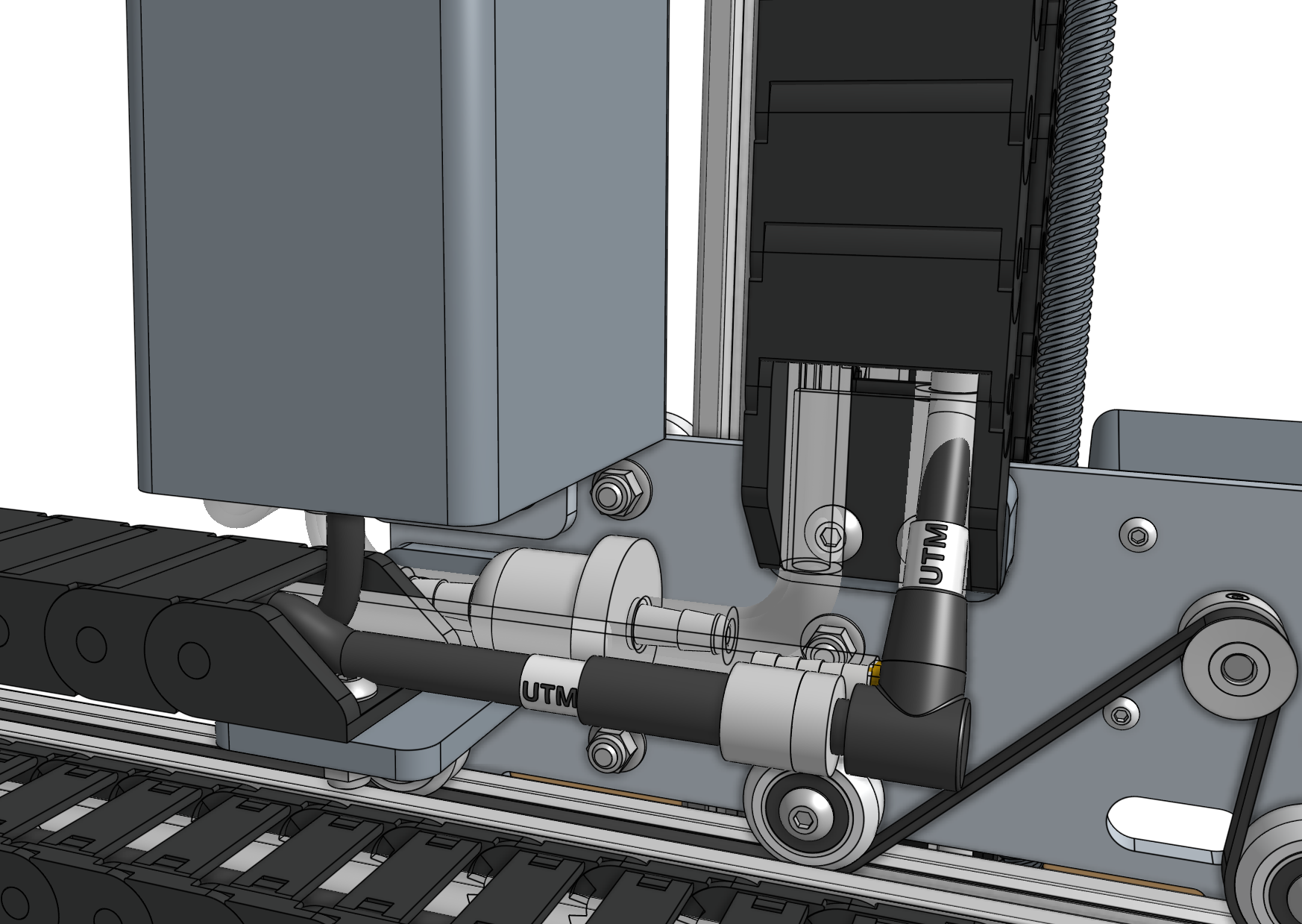
Connect the Y-axis and Z-axis sections of the following cables together:
ZYencoder cable toZZencoder cable with the 7-pin connectorsZYmotor cable toZZmotor cable with the 4-pin connectors- Camera (
CAM) to camera cable (CAM) with the 4-pin connectors
Some cables use the same 4-pin connectors
Double check you have connected:
CAMtoCAMZYtoZZ
Take your time. A mistake here could cause damage to the electronics.
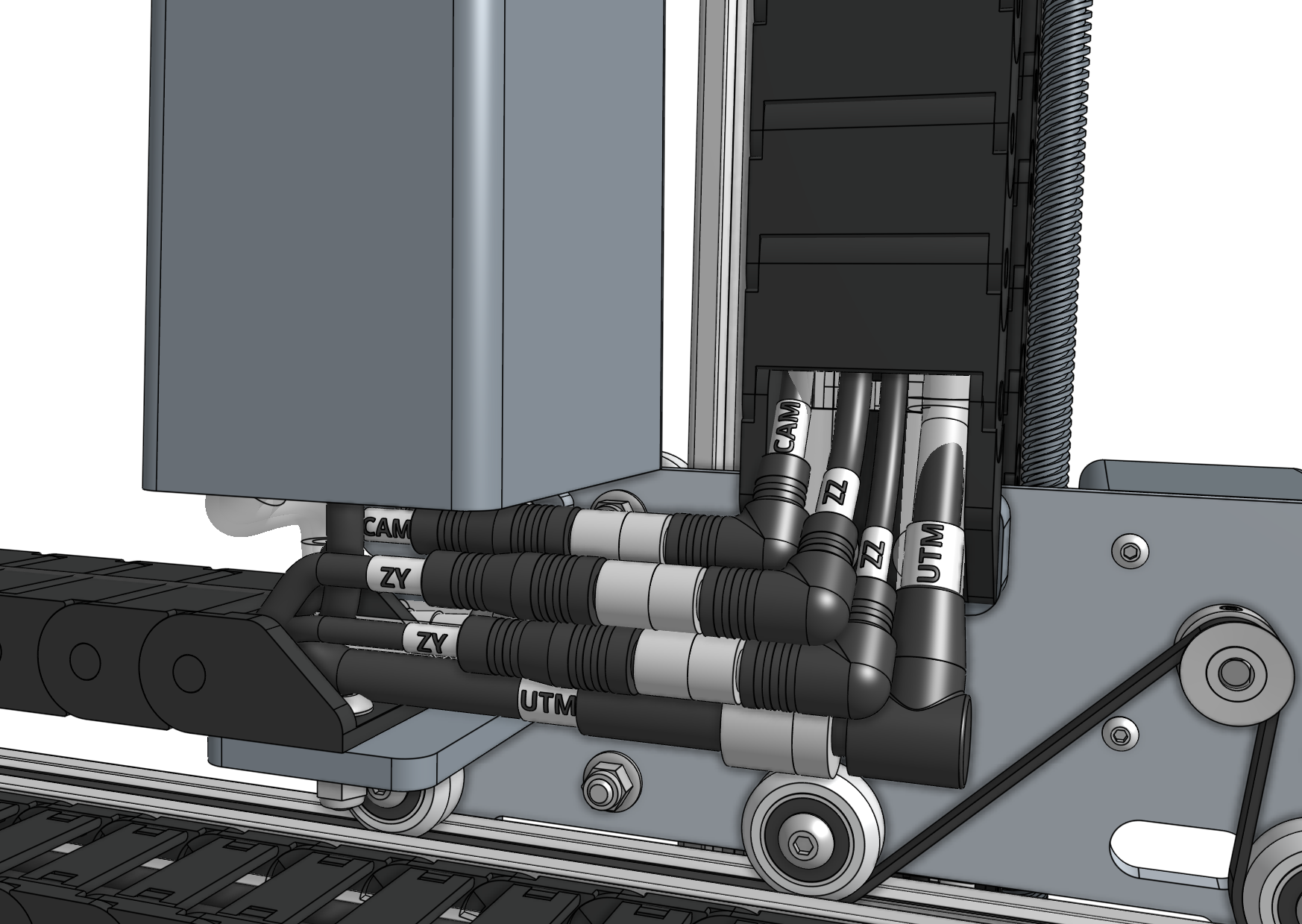
Ensure you fully inserted the 90-degree connectors together. This may require a multi-step process of pushing together, slightly tightening the thumb screws, pushing together again, and tightening some more.
Step 8: Connect the y-axis motor and encoder
Connect the Y motor cable and Y encoder cable to the y-axis motor and encoder.
Use zip ties and plenty of slack to ensure the motor and encoder wires do not rub against the belt.


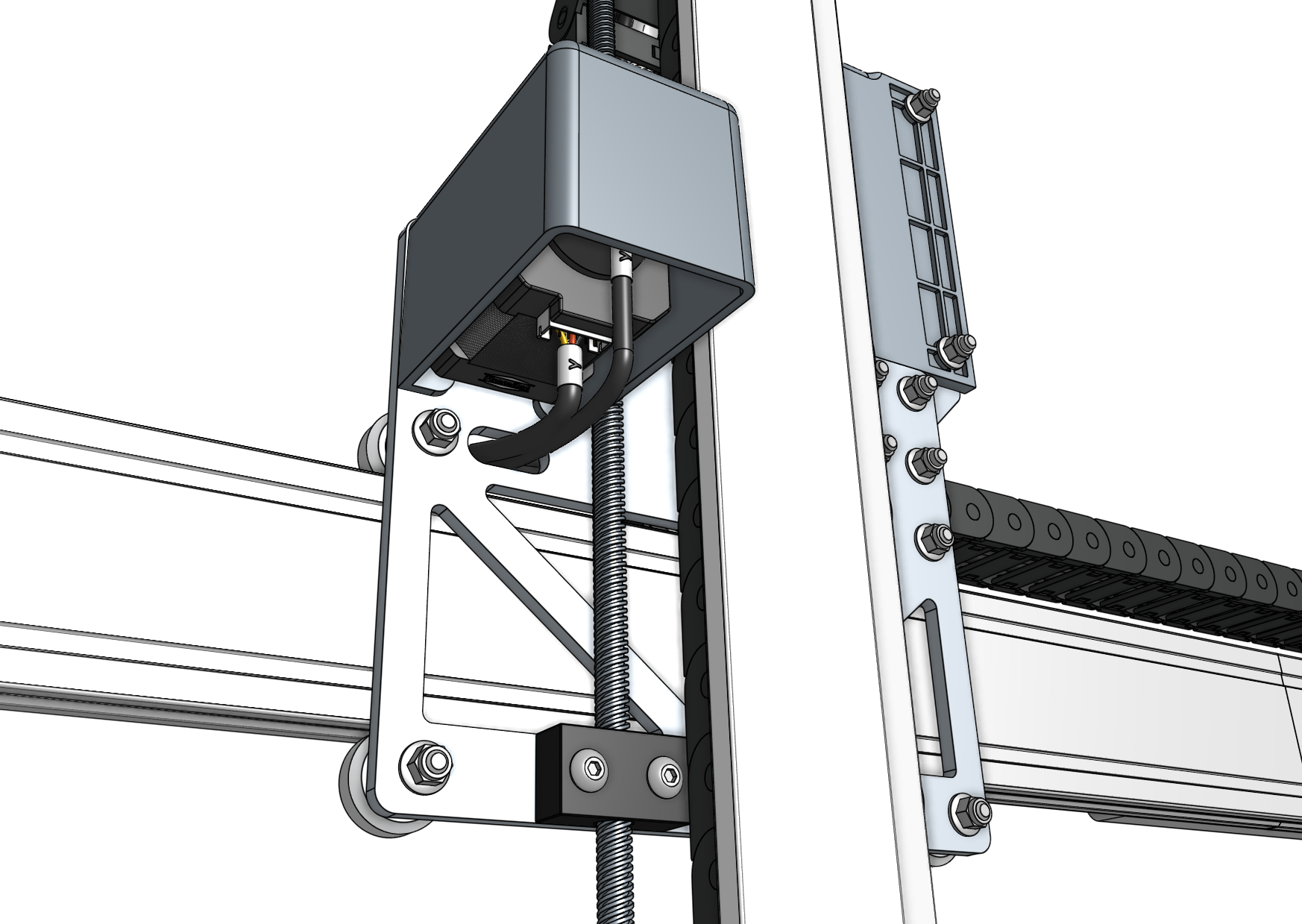
Step 9: Remove slack
Reduce the amount of extra tubing and wiring between the y-axis cable carrier and the z-axis cable carrier by gently pulling any extra cable or tubing length through the y-axis cable carrier. It can be difficult to coax the contents around the bend of the cable carrier, so take your time and ensure that you are not pulling anything too hard.
Never pull any cables by their connectors.
